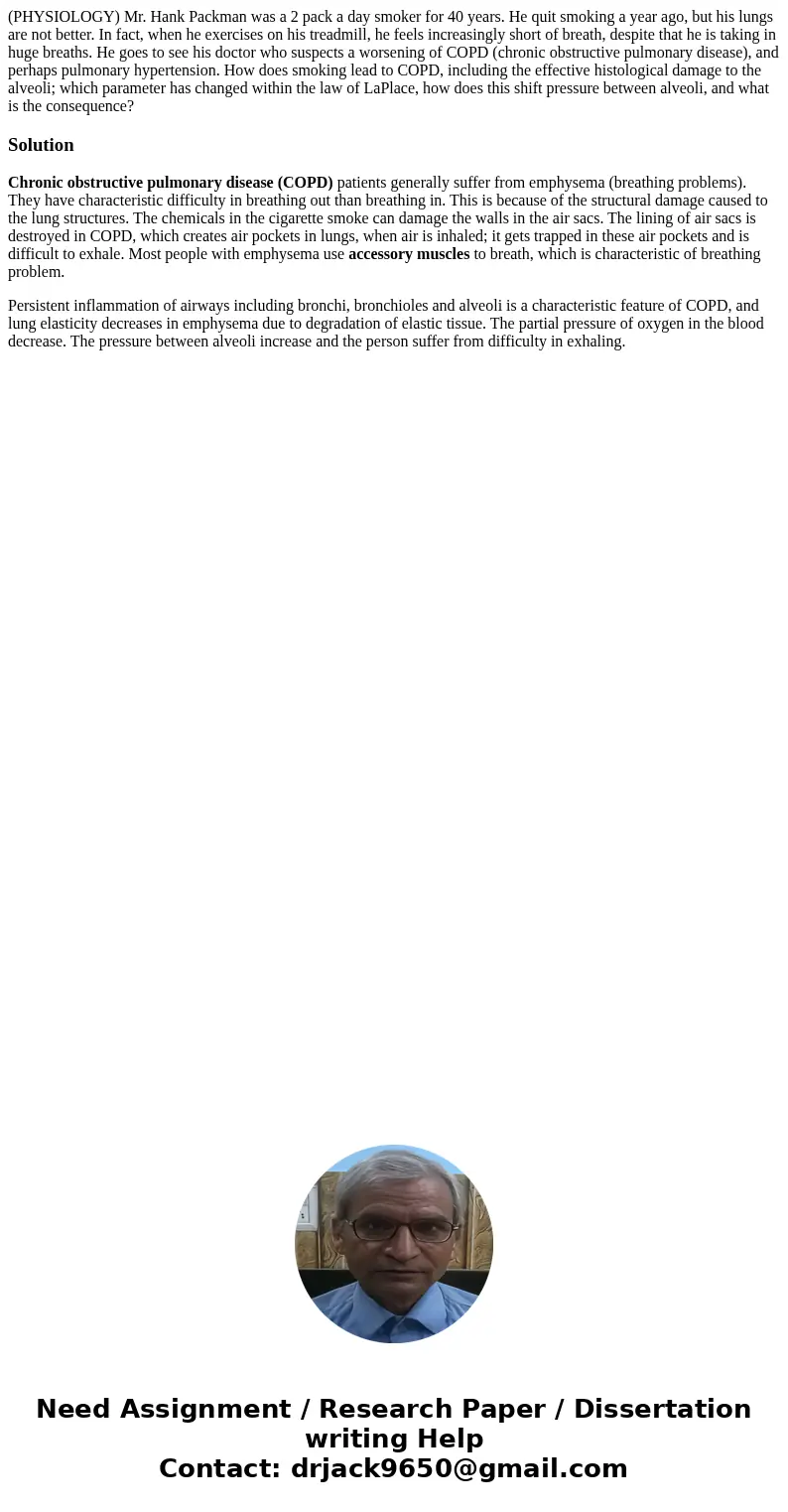PHYSIOLOGY Mr Hank Packman was a 2 pack a day smoker for 40
(PHYSIOLOGY) Mr. Hank Packman was a 2 pack a day smoker for 40 years. He quit smoking a year ago, but his lungs are not better. In fact, when he exercises on his treadmill, he feels increasingly short of breath, despite that he is taking in huge breaths. He goes to see his doctor who suspects a worsening of COPD (chronic obstructive pulmonary disease), and perhaps pulmonary hypertension. How does smoking lead to COPD, including the effective histological damage to the alveoli; which parameter has changed within the law of LaPlace, how does this shift pressure between alveoli, and what is the consequence?
Solution
Chronic obstructive pulmonary disease (COPD) patients generally suffer from emphysema (breathing problems). They have characteristic difficulty in breathing out than breathing in. This is because of the structural damage caused to the lung structures. The chemicals in the cigarette smoke can damage the walls in the air sacs. The lining of air sacs is destroyed in COPD, which creates air pockets in lungs, when air is inhaled; it gets trapped in these air pockets and is difficult to exhale. Most people with emphysema use accessory muscles to breath, which is characteristic of breathing problem.
Persistent inflammation of airways including bronchi, bronchioles and alveoli is a characteristic feature of COPD, and lung elasticity decreases in emphysema due to degradation of elastic tissue. The partial pressure of oxygen in the blood decrease. The pressure between alveoli increase and the person suffer from difficulty in exhaling.

 Homework Sourse
Homework Sourse